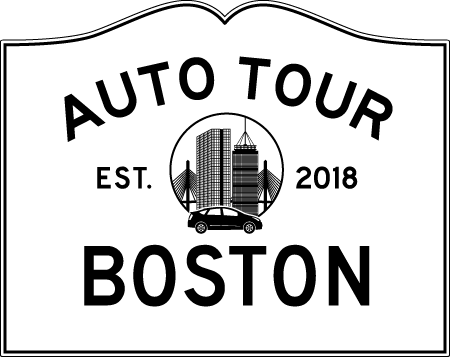A Nostalgic Drive through Brookline, Pt. 2
“Drives About Boston: Brookline and Chestnut Hill”
From “Boston and Its Suburbs: A Guide Book.” (Boston: Press of Stanley & Usher, 171 Devonshire Street, 1888), p. 103-104.
“Famous is Boston, in a reflective way, for the beauty of its suburbs. The tourist has not yet enjoyed the half that Boston has to delight him with who has not passed beyond the city gates. The drives about Boston are charming. The roads are superb. Beautiful residences, delightful country-seats, magnificent prospects, are in every direction except eastward to the sea, and even then there is much of interest to enjoy. It may be that the most frequented drive is over the Milldam, as it is called, or the extension of Beacon Street, through Longwood and Brookline, to the Chestnut Hill Reservoir.
An 1858 view of the Boston Milldam
From our pivotal point, Copley Square, we drive out Dartmouth Street, down the whole length of Commonwealth Avenue, and can soon continue on that grand boulevard straight out of where we wish to go. For the present, until the improvements are complete, we turn at West Chester Park into Beacon Street, and drive, out to Longwood.
Beacon Street and Commonwealth Avenue, 1903 (Source: Library of Congress)
This is the part of Brookline nearest to Boston; indeed, the whole town is nearly surrounded by the city, but Longwood is nearest to and overlooks the ancient and original Boston. It is separated from the Back Bay district only by the Back Bay Park and Muddy River Improvement, as it is called, and is in various ways accessible, having on the Boston & Albany Railroad Chapel, and Longwood stations, horsecars by way of Huntington Avenue, and also a new route opened only in the summer of 1888 by way of Beacon Street.
Longwood is one of the most desirable sections for residence near Boston. The homes are all of a well-to-do-people, many are very elegant, the society is unexceptionable, and the whole section is laid out with taste and skill. Passing through Longwood, we are at once, without perceptible line of division, in the village, as before in the town, of Brookline. This town has long enjoyed the preeminent reputation of being the wealthiest in the United States. Its whole territory, which is quite large, is covered with beautiful and costly villas, magnificent estates, on the elaborate improvement of which great sums of money have been used. Drive where one will throughout the town, new and beautiful vistas are continually surprising us. It is said to more resemble and English country landscape than any other place in America.
Having reached Harvard Street, (photos) we diverse to the left, toward the center of the village, and almost immediately pass, on our right, the Harvard-street Church, Congregational Trinitarian, one of the most elegant examples of ecclesiastical architecture in the State. It is of brownstone, of the English Gothic order of architecture, and is elaborately finished. The Brookline Public Library, which we quickly reach on our right, cost about $50,000, and very near it the Town Hall, a large and imposing granite structure, of attractive architecture, cost $150,000. Here at the center of the village is the Brookline Station, on the Newton Circuit Branch of the Boston & Albany Railroad; and a little further out, also within the town, are Cypress Street and Chestnut Hill Stations. The population of the town is a little more than 10,000.
Continuing our drive by way of Beacon Street, the new Massachusetts Avenue, or Washington Street in Brookline, as we are brought to objective point, the Chestnut Hill Reservoir. A lofty granite gateway, of the modern classical order, marks the entrance to the Reservoirs grounds on which is cut in prominent letters:
1870
City of Boston
Chestnut Hill Reservoir






